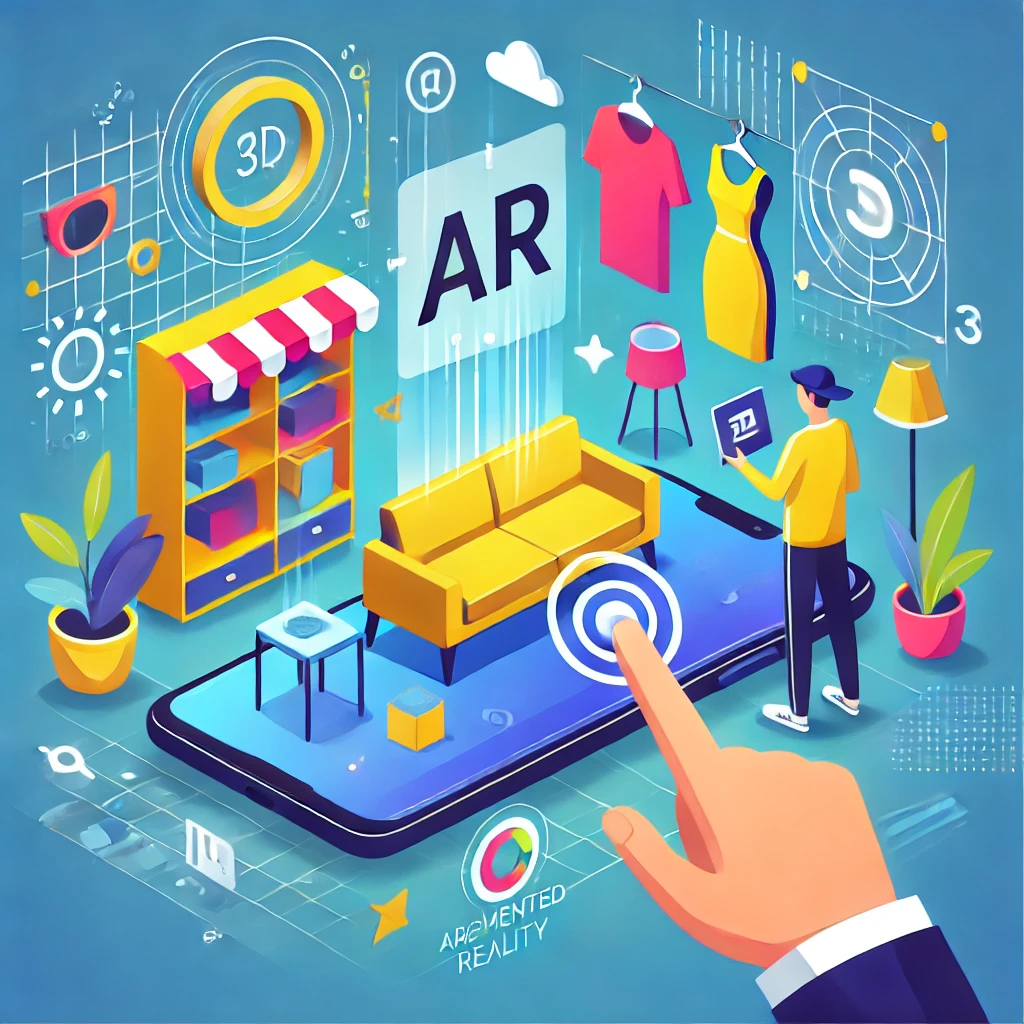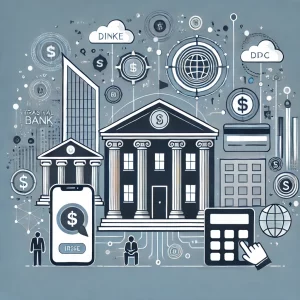Augmented Reality in the Retail Industry

Augmented Reality (AR) is transforming the retail industry by enhancing the shopping experience, bridging the gap between online and in-store shopping, and allowing customers to interact with products in innovative ways. By overlaying digital elements onto the physical world, AR offers a dynamic and engaging approach to product visualization, personalized recommendations, and immersive experiences. With the growing adoption of AR technologies, retailers are finding new ways to attract customers, drive sales, and improve brand loyalty.
1. Enhanced Product Visualization
One of the most significant benefits of AR in retail is its ability to improve product visualization. Traditional online shopping often leaves customers guessing about how a product will look or fit in their real-life environment. AR addresses this issue by allowing customers to visualize products in 3D and even place virtual items in their surroundings using smartphone cameras.
Examples of enhanced product visualization:
- Home furnishing stores: Companies like IKEA and Wayfair use AR to let customers visualize how furniture will look in their living spaces. By pointing a smartphone camera at a room, customers can see a digital representation of furniture in real-time, making it easier to decide on size, color, and style.
- Fashion and accessories: Retailers like Warby Parker offer virtual try-ons for eyeglasses, allowing customers to see how different styles look on their faces before making a purchase. This reduces the uncertainty of online shopping and helps customers find the perfect fit.
2. Personalized Shopping Experience
AR enhances the shopping experience by providing personalized and interactive features that cater to individual preferences. With AR, customers can access product information, reviews, and personalized recommendations tailored to their tastes and shopping history.
Use cases of personalized AR experiences:
- Beauty and cosmetics: Brands like Sephora and L’Oréal have developed AR-powered apps that allow customers to try on makeup virtually. Users can see how different shades of lipstick, eyeshadow, or foundation will look on their skin, creating a more personalized and enjoyable shopping experience.
- In-store navigation: Some retailers use AR to guide customers through stores. AR-enabled apps can provide directions to specific products, offer special promotions, or display product details when customers point their smartphones at items on the shelf.
3. Interactive and Immersive Advertising
AR provides a new dimension to advertising by making promotional content more interactive and engaging. Rather than relying on static images or videos, AR allows customers to interact with advertisements in a way that brings products to life.
Examples of interactive AR advertising:
- Print ads and billboards: Some companies integrate AR into print advertisements and billboards, allowing users to scan a QR code with their smartphones to unlock 3D product demonstrations or animations. This makes traditional advertising formats more engaging and memorable.
- Social media filters: AR filters on platforms like Instagram and Snapchat enable brands to create fun and interactive experiences that users can share. For instance, users can “try on” virtual clothing or see how a piece of furniture fits in their home, all while engaging with the brand’s social media content.
4. Virtual Stores and Showrooms
With the help of AR, retailers can create virtual stores and showrooms that replicate the in-store experience online. These virtual spaces enable customers to browse products, interact with 3D models, and make purchases without physically visiting the store.
Use cases of virtual stores and showrooms:
- Automotive industry: Car manufacturers like Audi and BMW use AR to offer virtual showrooms where potential buyers can explore car models in 3D, customize features, and view the interior and exterior from various angles.
- Luxury fashion brands: Some high-end fashion retailers are experimenting with AR-powered virtual boutiques that allow customers to explore collections and view clothing in 3D, mimicking the feel of an exclusive in-store experience.
5. Boosting In-Store Engagement
AR isn’t limited to online shopping; it also enhances the in-store experience by providing additional information, gamifying the shopping process, and encouraging customer interaction. AR can turn a simple store visit into an exciting experience by offering digital layers that provide added value.
Examples of in-store AR applications:
- Product information kiosks: Stores can use AR-enabled kiosks where customers scan items to access detailed product information, reviews, and video demonstrations. This adds a digital layer to traditional retail, helping customers make informed purchase decisions.
- Gamified experiences: Retailers can incorporate AR-based games or scavenger hunts within their stores. For example, customers can use a smartphone app to collect virtual rewards or discounts by finding hidden items throughout the store, creating an entertaining and engaging shopping journey.
6. Reducing Return Rates
One of the main challenges in retail, especially e-commerce, is managing product returns. AR helps to address this issue by enabling customers to make better-informed purchase decisions. By visualizing products in 3D, customers can better understand the dimensions, colors, and fit of items, reducing the likelihood of dissatisfaction and returns.
For example, clothing retailers can offer AR virtual fitting rooms where customers can see how different outfits look on a digital model based on their body measurements. This helps customers choose the right size and style, ultimately reducing return rates and improving customer satisfaction.
Challenges of AR in Retail
While AR offers significant benefits, there are also challenges to its widespread adoption:
- High Development Costs: Developing high-quality AR experiences can be expensive, especially for smaller retailers. The cost of creating 3D models, interactive features, and mobile apps may be a barrier to entry.
- Technical Requirements: Not all consumers have access to the latest AR-enabled devices, which may limit the reach of AR applications. Ensuring compatibility across various devices and platforms is essential for delivering a seamless experience.
- User Adoption: While AR is gaining popularity, some customers may still be unfamiliar with the technology or hesitant to use it. Retailers need to educate consumers about the benefits of AR and make the experience user-friendly to encourage adoption.
Conclusion
Augmented Reality is transforming the retail industry by offering enhanced product visualization, personalized shopping experiences, and interactive advertising. Its ability to create virtual stores, boost in-store engagement, and reduce return rates makes it a valuable tool for retailers looking to innovate and stay competitive. Although challenges such as development costs and user adoption remain, the benefits of AR in retail suggest that it will play a key role in the future of shopping, providing dynamic and immersive experiences for customers.






